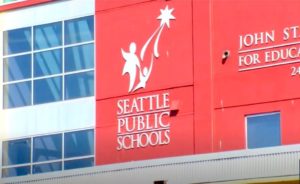Report: Only half of Tennessee education funding makes it to classrooms
(Vivian Jones, The Center Square) – While Tennessee’s spending on education continues to rise, the amount of funding that gets to classrooms has not, a new report from the Beacon Center of…

(Vivian Jones, The Center Square) – While Tennessee’s spending on education continues to rise, the amount of funding that gets to classrooms has not, a new report from the Beacon Center of Tennessee shows.
Only 53% of K-12 education funding makes it to the classroom, the report found, bringing Tennessee 7% below the national average. That means while the state is spending more each year on K-12 education, administrative costs are eating up more of the money before it can get to teachers and students.
K-12 education makes up a significant portion of Tennessee’s state budget, and the state has increased that spending by 3% since 2018. A total of $11 billion was designated for K-12 education in 2021, or about $11,391 per student, according to the report.
Meanwhile, student enrollment rates have increased by only 5% statewide, and teacher salaries, on average, have decreased by 1.5% since 2012.
So where has the money gone? Increasingly, to administrative costs, which has increased by 13.5% since 2018 despite a total spending increase of only 3%.
The number of vice principal positions created and hired has increased by 24% since 2012. During the same period, the number of classroom teachers fell 3%.
Salaries of superintendents have grown by 8.3% since 2012.
“The data show a drop in teacher compensation and a decrease in the number of teachers due to ballooning administrative costs,” the report concluded. “This means that while calls for additional funding have been answered, the destination of those funds has not met the needs of Tennessee students and teachers.”
The Beacon Center report was co-written by Research Associate Jason Edmonds and Ron Shultis, director of Policy and Research.
Edmonds said he would like to see the state adopt an education budgeting model that is student-based and would allow for more transparency, flexibility and accountability for students.
“We want to see more education funding actually going to funding students in the classroom, and not the administrative bureaucracy,” Edmonds said in an interview with The Center Square.
In Tennessee, state dollars for K-12 education flow through a mechanism called the Basic Education Plan – a 46-element funding formula that categorizes spending in terms of instruction, benefits, classroom and nonclassroom expenses. Tennessee is one of a handful of states that uses this type of method.
“Tennessee is pretty unique in how they do education funding,” Edmonds said. “It definitely puts more on supporting the system instead of the student’s needs.”
While there are perennial calls for BEP reform in the Tennessee Legislature – particularly during a special session on education called by Gov. Bill Lee earlier this year – it hasn’t happened yet.
The funding formula has been a matter of controversy, in particular between the state and Tennessee’s two largest school districts: Shelby County Schools and Metro Nashville Public Schools.
Shelby County Schools sued the state in 2015, arguing Tennessee does not allocate enough money for schools to provide an adequate education, especially in larger urban districts that serve higher numbers of low-income or special needs students, and those who come from non-English speaking homes.
A trial date in the case is set for later this fall. If the districts prevail, the case could force the state to invest more in K-12 education.
Shelby County Schools and Metro Nashville Public Schools declined to comment on the Beacon Center report.



